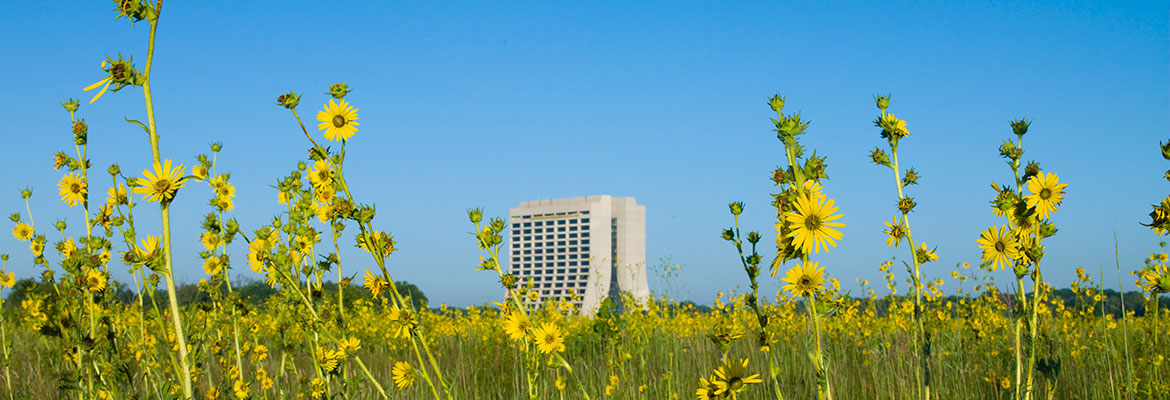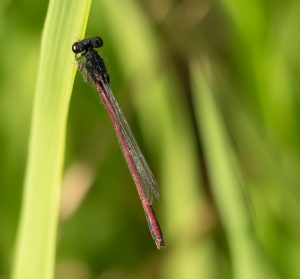Open Water
Lakes and ponds represent open water habitat communities at Fermilab. Open water communities have submerged, emergent, and shoreline vegetation that can provide important microhabitat structure for aquatic wildlife such as fishes, mussels, snails, and other invertebrates. Most open water at Fermilab is vital to laboratory operations as part of the industrial cooling water system. Invasive species occurring in open waters are zebra mussels (Dreissena polymorpha), giant reed grass (Phragmites australis), reed canary grass (Phalaris arundinacea), and purple loosestrife (Lythrum salicaria).
Lake Law, Swan Lake, and Main Ring Lake are some examples of open water habitat at Fermilab. Habitat quality is variable as many areas were historically dredged or are created.
Moving Water
Moving waters of the Chicago region are divided into several size categories, two of which are found at Fermilab. The smallest of these is the headwater stream, a tiny creek that may flow only intermittently. Indian Creek and Ferry Creek are examples of headwater streams at Fermilab. Low order streams, such as Kress Creek, are small- to medium-sized creeks whose bottoms have been shaped by the water to produce riffles and pools, alternating sections of fast, shallow water and slow, deep water. Riparian buffers and adjacent wetlands can be important to maintaining biodiversity in moving water communities by reducing nutrient and sediment loads and providing structure for aquatic wildlife. Invasive species occurring in open waters are zebra mussels (Dreissena polymorpha), giant reed grass (Phragmites australis), reed canary grass (Phalaris arundinacea), and purple loosestrife (Lythrum salicaria).


